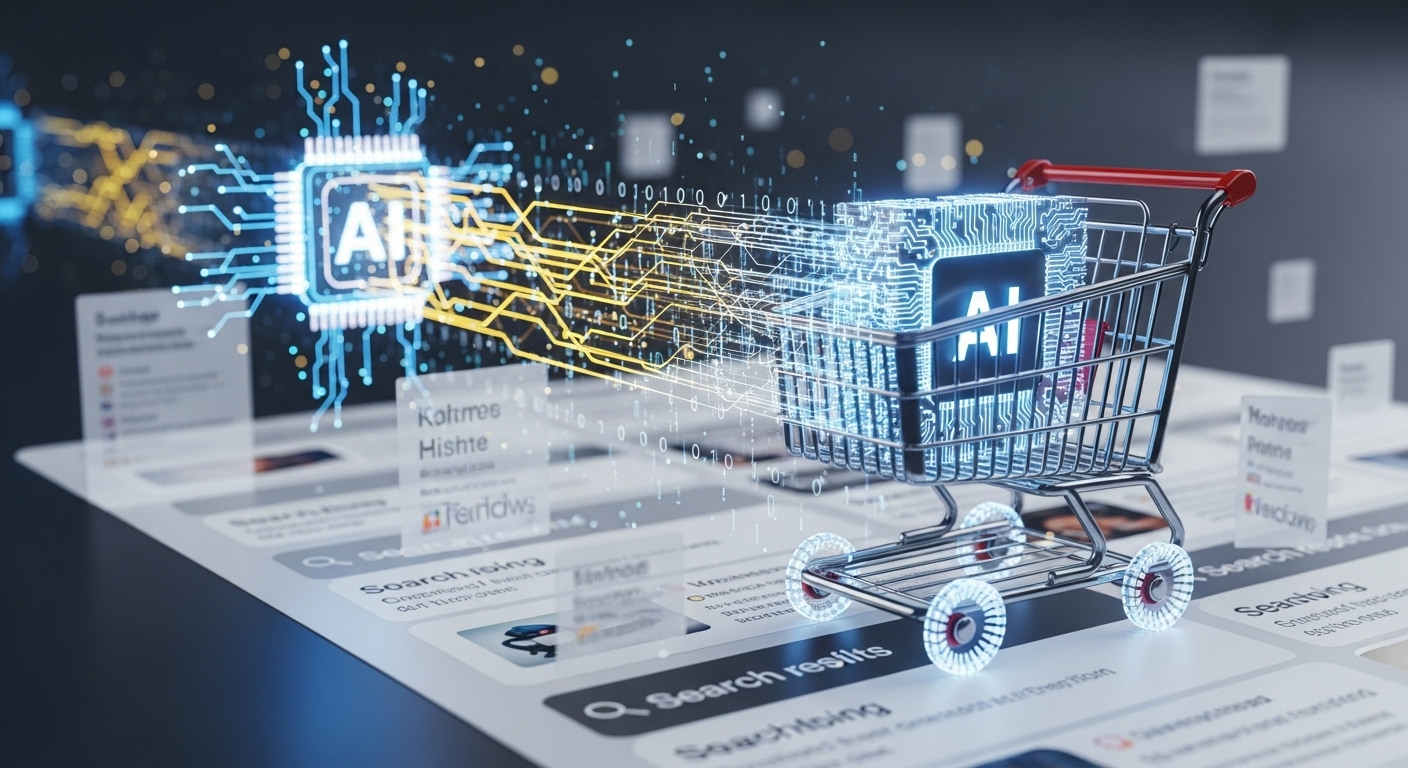Google is significantly improving the online shopping experience. Crucially, the timing is optimal. The company has introduced a major upgrade to its AI Mode in Search, anticipating the 2025 holiday season. This transformation turns the search engine into a more proactive and conversational shopping assistant. These changes present a new domain for exploration and a revised set of strategies for marketers.
How AI Mode Facilitates Intuitive Shopping
The recent Google update facilitates a more intuitive shopping experience for users. Users can now state their needs in plain English. They no longer need to input specific filters or keywords. AI Mode handles all the subsequent processing.
Seeking a warm sweater in autumnal hues? Inform Google of your preference. It will produce a well-structured response. This response includes image options, price comparisons, product reviews, and live inventory data. Google’s extensive Shopping Graph, which holds over 50 billion items, supports all this information.
Introducing Agentic Checkout and Local Calls
Google extended its efforts beyond simple discovery. It introduces an “agentic” dimension, which facilitates active steps toward purchase.
This process, called agentic checkout, involves selecting a product. You establish preferences like size, color, and budget. Then, you instruct Google to “track price.” When the item hits the target, Google notifies you. For qualifying merchants, Google can then complete the purchase through Google Pay, after you confirm all details.
This feature could significantly enhance Google’s capabilities as a commerce platform. Another feature may be even more transformative: Google making phone calls to stores on your behalf. The new AI uses Duplex, Google’s established voice-AI system. It makes calls to local businesses to inquire about item availability, pricing, and promotions. After the call, Google provides a summary via email or text. This summary details its findings along with local inventory information.
Google has announced that this rollout is commencing in the United States. Categories include electronics, toys, and beauty products.
Strategic Implications for Brands
This is a significant development for brands and marketers. Google is not merely providing recommendations; it is actively facilitating consumer purchases. Retailers can use Google’s Shopping Graph to display local inventory. Furthermore, advertising teams have increased motivation to allocate resources towards shopping-focused ad formats within AI Mode.
Google has enhanced its search-to-shopping pipeline visually. The revised AI Mode now facilitates a more intuitive exploration driven by images. Upload a reference image or capture a real-life object. Then, articulate your requirements and refine your request through dialogue. Subsequently, Google will propose products that align with your specifications.
This process involves not only discovery but also serendipitous inspiration. Shoppers can browse as if they are consulting with a stylist. There is also a virtual fitting room available for fashion shoppers. Google’s “Try On” application allows you to submit a full-length photo of yourself. The AI then simulates how garments might look on your body. This simulation is based on fabric flow and material behavior. In essence, Google transformed your smartphone into a smart mirror.
Why this is a Strategic Shift for Retailers
This is not just an update; it is a paradigm shift in commerce. Here are key implications and strategic takeaways:
High Intent + Low Friction
Google’s agentic checkout allows shoppers to turn intent into action without leaving Search. For merchants, this means that more of Google’s daily “window-shopping” traffic could now convert into transactions. This removes the need for ongoing retargeting or abandoned cart follow-ups.
Omnichannel Advantage
Brands with local storefronts now have a powerful channel. Google’s AI is calling stores for customers. That might increase foot traffic, especially during peak shopping seasons. Retailers must keep their inventory data up-to-date and optimized for Google’s Shopping Graph.
Data-driven Personalization
Customers tell Google what they want. The AI refines recommendations dynamically based on product data, prices, and inventory. For brand teams, refining product metadata (pictures, specs, variants) is more critical than ever; good data equals more visibility.
New Advertising Opportunities
Google stated that sponsored listings will appear in AI Mode Search. This functions just like regular search advertisements. Therefore, in this conversational setting, brands must reconsider how they position and bid on “recommended” placements versus standard text advertising.
Trust and Privacy Considerations
Having Google call stores or make purchases on one’s behalf raises trust concerns. However, the payback for Google is significant. By capturing more buying behavior, it gains greater insight into customer behaviors. This, in turn, fuels better AI and ad targeting.
When Brands Should Focus Now
- Optimize for conversational queries: Keywords are no longer sufficient. Brands should tailor their SEO/SEM efforts to natural language shopping (e.g., “I want a durable raincoat for commuting”), which customers speak rather than type.
- Surface Rich Inventory Data: Make sure product feeds are correct, up-to-date, and structured. This ensures AI Mode can find the most relevant listings.
- Enable Price Tracking: Encourage customers to track your products through Google. A drop alert may result in a Google-facilitated purchase.
- Prepare for AI-Aided Local Commerce: Physical shops should ensure that their inventory is visible and correct. This allows them to utilize the “Let Google Call” capabilities.
- Invest in AI-Ready Creative: Create high-quality picture assets and specifications. This helps Google’s visual and comparison tools properly showcase products.
The Bottom Line
Google’s holiday AI shopping update represents a significant step forward in “agentic commerce.” In this model, AI actively assists you in shopping rather than just finding products. For marketers, this implies a new battleground. They must ensure that their products, pricing, and inventories are prepared for a future where artificial intelligence does the hard lifting.
If you get this right, your brand may not only win eyeballs, but also the checkout.
ALSO WATCH MARKETING EDGE ONTV








Comment
No comments found.